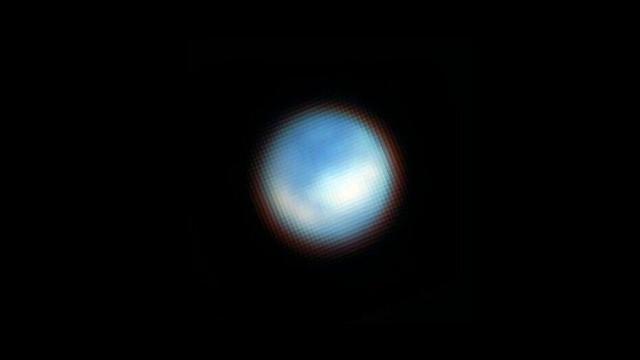The Webb Space Telescope has made its latest significant discovery: the observation of carbon dioxide coming from a part of Europa, the frozen moon orbiting Jupiter which harbors a salty water ocean under its icy surface.
The finding is a boost for astrobiology, or the search for life beyond Earth. Carbon is critical for life as we know it—life on Earth is carbon-based—so the element appearing in Europa’s oceans, long thought a potential venue for alien life, boosts those hopes. Water is also necessary for life on Earth, hence the particular excitement around Europa over, say, Mars, which has an abundance of carbon dioxide but has no liquid water, at least none we yet know of.
The search for alien life is also the cornerstone of the Perseverance rover’s mission on Mars, and a foundational aspect of other space agency projects, including NASA’s next-generation Habitable Worlds Observatory. But Europa, always a target of astrobiologists, has now gotten a big boost from the carbon dioxide detection.
Webb’s Near-Infrared Spectrograph (NIRSpec) instrument detected carbon dioxide on Europa’s “chaos region” of Tara Regio. In this area, the surface ice has been disrupted, allowing substances in the moon’s ocean to rise to the surface.
Analysis of the Webb data was published today in two independent Science papers; one of the papers explored the potential composition of Europa’s subsurface ocean based on the specific area of the carbon dioxide detection, and the other paper identified the carbon source and found no plumes from the moon, a further indication that the Europa’s surface disruption allowed the carbon dioxide to appear.
“We now think that we have observational evidence that the carbon we see on Europa’s surface came from the ocean. That’s not a trivial thing. Carbon is a biologically essential element,” said Samantha Trumbo, a planetary scientist at Cornell University and lead author of one of the study’s analyzing the new data, in a European Space Agency release.
Like Saturn’s icy moon Enceladus, Europa occasionally issues gigantic plumes of water vapor that scientists thought may have carried the carbon to the surface of Tara Regio. In May, Webb used NIRSpec to identify a water plume more than 20 times the size of Enceladus itself extending from the moon’s south pole.
But the Webb data didn’t indicate a plume was at play in the 1,944-mile-wide (3,128-kilometer-wide) field of view of Europa studied by NIRSpec—which doesn’t outright certify there wasn’t a plume, but it didn’t show up in the data if so.
“Previous observations from the Hubble Space Telescope show evidence for ocean-derived salt in Tara Regio,” Trumbo said. “Now we’re seeing that carbon dioxide is heavily concentrated there as well. We think this implies that the carbon probably has its ultimate origin in the internal ocean.”
More insights into Europa are on the horizon. ESA’s JUpiter ICy moons Explorer, or JUICE, launched from French Guiana in April, with an anticipated arrival in Jupiter’s system in 2031. JUICE will obviously study Europa, but also the moons Ganymede and Callisto, which have their own oceans. Not to be outdone, NASA’s Europa Clipper mission is set to launch in October 2024 and arrive at Europa specifically in 2030, and will get closer to the moon’s surface than any spacecraft before it.
“Understanding the chemistry of Europa’s ocean will help us determine whether it’s hostile to life as we know it, or if it might be a good place for life,” said Geronimo Villanueva, a planetary scientist at NASA’s Goddard Spaceflight Center and lead author of the other paper, in the same release.
Studying our solar system’s planets and moons is just one of the many, many jobs undertaken by the Webb Space Telescope since the observatory began science observations in July 2022. Many more takeaways will follow, but for the up-close-and-personal view of Jupiter’s moons we’ll have to wait until the end of the decade.
